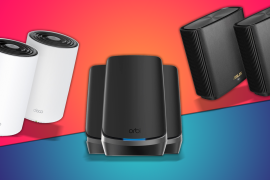Best premium laptops, notebooks and ultrabooks in 2025
Super premium Ultrabooks and MacBooks for work, play and everything else from $1000/£1000
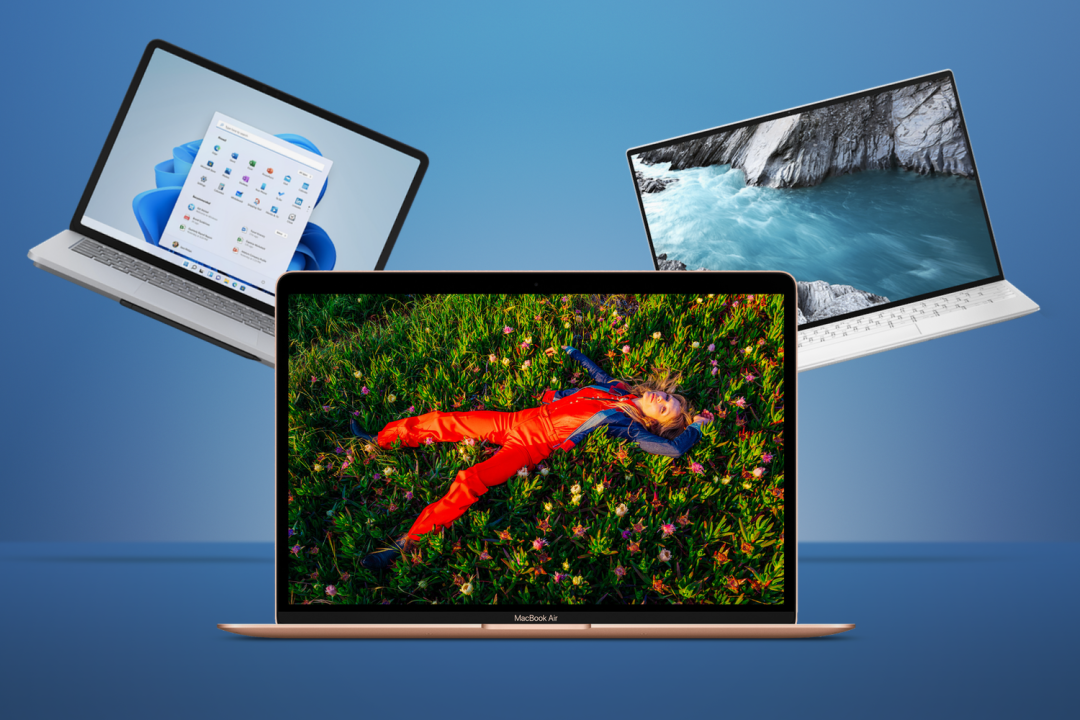
Looking for the best laptop that you can take with you anywhere? Good news, portability fans: loads of those exist. From hybrid workhorses to gaming machines with serious grunt, the best premium laptops make it easy to get stuff done on the run. And while their flip-top form remains fundamentally true to that of their forebears, the nicest notebooks today are lighter, brighter and faster than ever.
So whether you’re typing on the train, coding in a café or procrastinating at your place of work, the right notebook will make life a whole lot easier.
But what if you’re not sure how to choose? Helpful as ever, we’ve already flipped, clicked and carried all of the latest and best laptops for every budget – then narrowed that list to our top premium notebook picks in the guide below.
What’s the best premium laptop?
We think the Apple MacBook Air M3 (buy now) is the best premium laptop for most people. This streamlined machine comes with a revamped design and top-spec Apple silicon – setting a new bar for performance and delivering more than enough power for most users. Yes, it’s on the expensive side, but the build quality, power, and long battery life make it worth the high price, in our eyes.
Other premium laptop recommendations
If the MacBook Air M2 isn’t for you, then here are five other premium laptop recommendations:
The Dell XPS 13 (9310) (buy now) has long dominated the ultra-portable laptop market. The latest edition steps things up another notch: besides a travel-friendly form factor and solid performance potential, the 9310 can also be configured with a stunning OLED display.
The Apple MacBook Pro 14in (M2 Pro) (buy now) puts the ‘pro’ back in MacBook Pro, Apple’s M2 Pro and Max are serious pieces of silicon. The MacBook Pro 14in is leagues ahead when it comes to tasks that benefit from boosted multi-core performance and GPU grunt – think video production and 3D rendering.
The Razer Blade 14 (buy now) is Razer’s first 14in laptop and is also its first to ship with an AMD processor. It comes with Nvidia GeForce RTX 3060 graphics providing added gaming grunt, it strikes a superb balance between power and portability.
The Apple MacBook Air (M1) (buy now) is not the latest MacBook Air, but it’s still a powerful, lightweight laptop with all-day battery life, brilliant build quality and a superb display. Of course, budget premium may seem like an oxymoron, but it is possible to get a premium experience without spending thousands.
The LG Gram (buy now) delivers in all departments: longevity is superb, the display immersive and the shell lightweight. In fact, at just 1.19kg, it’s the lightest 16in laptop in the world
The best premium laptops you can buy today:
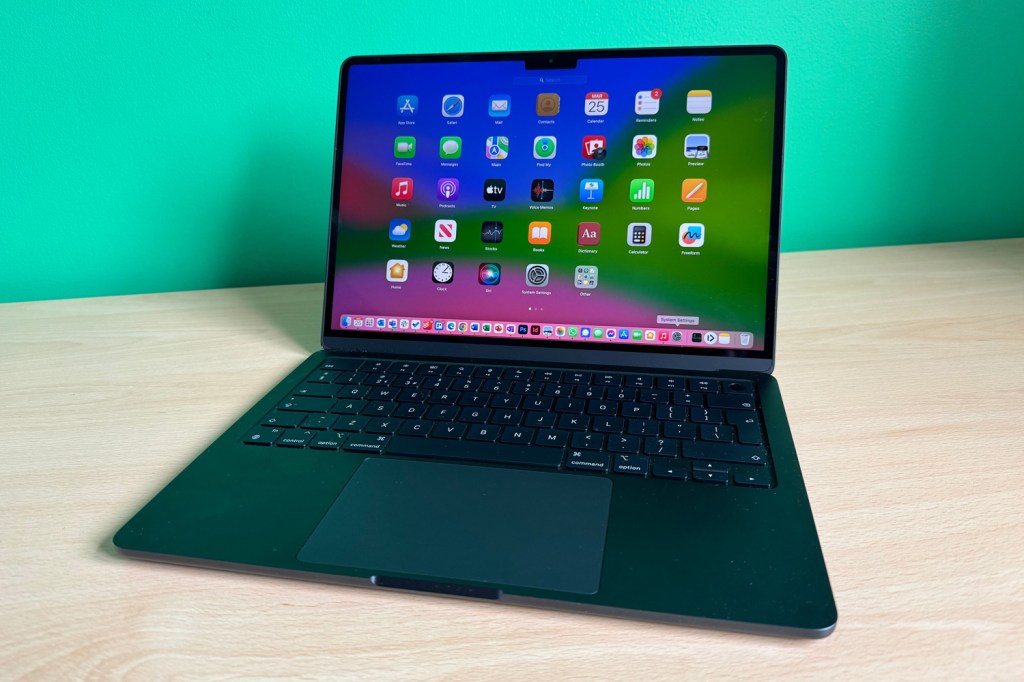
1. Apple MacBook Air (M3)
Stuff Verdict
Yes, the best everyday ultraportable is now even better – the gauntlet has been laid down for Intel laptops again.
Pros
- Beautifully designed
- Super light
- Superb keyboard
Cons
- Upgrades can be very expensive
- Very similar to the M2 Air
| Apple MacBook Air (M3) specs | |
|---|---|
| Screen | 13.6in 2560×1664 60Hz LED |
| Processor | Apple M3 |
| RAM | 8GB/16GB/24GB |
| Storage | 256GB/512GB/1TB/2TB SSD |
| OS | macOS Sonoma |
| Connectivity | 802.11ax Wi-Fi 6; Bluetooth 5.0; 3.5mm headphone; 2×Thunderbolt 3 (USB 4); MagSafe |
| Dimensions | 30.41×21.5×1.13cm; 1.24kg |
The MacBook Air M3 is the best premium laptop for most people due to its excellent performance and efficiency. The M3 chip offers significant speed and graphics improvements, capable of handling anything you throw at it. Its energy efficiency leads to impressive battery life, lasting up to 15-18 hours, making it ideal for extended use without frequent recharges.
We love the sleek, lightweight design that ensures portability, making it perfect if you frequently travel with your laptop. The unibody aluminium build is durable and feels like the most premium laptop around.
On top of that, the high-resolution Retina display has excellent colour accuracy and enhanced speakers make it great for watching films and listening to music.
Add macOS Sonoma, the outstanding Magic Keyboard and responsive trackpad, and you’ve got yourself the complete package.
- Read more: Apple MacBook Air (M3) review
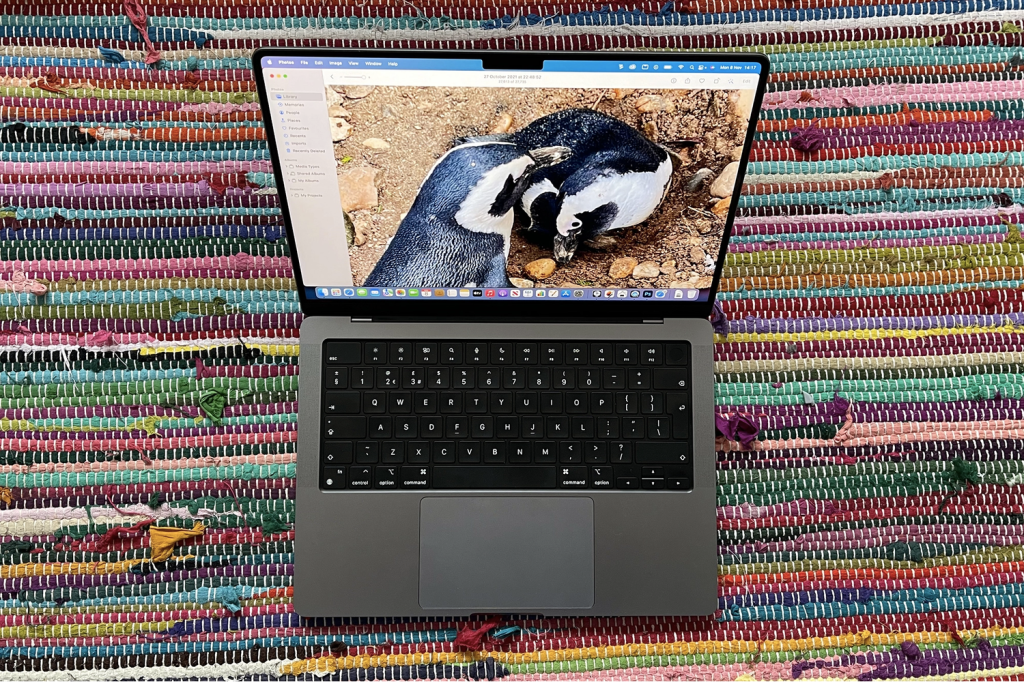
2. Apple MacBook Pro 14in (M2 Pro)
Stuff Verdict
With ports, power and pixels to spare, this MacBook is properly Pro – and its price tag won’t let you forget it
Pros
- Excellent performance, quiet and cool
- Superb display
Cons
- No cellular option
- No Centre Stage/Face ID
| Apple MacBook Pro 14in (M2 Pro) specs | |
|---|---|
| Screen | 14.2-inch Liquid Retina XDR 3024×1964 with P3, True Tone and ProMotion |
| Processor | Apple M1 Pro |
| RAM | 16GB/32GB |
| Storage | 512GB–8TB SSD |
| OS | macOS Monterey |
| Connectivity | 802.11ax Wi‑Fi 6; Bluetooth 5.0; 3.5 headphone; 3x Thunderbolt 4; MagSafe 3; HDMI; SDXC |
| Dimensions | 31.25 x 22.12 x 1.55 cm; 1.6 kg |
Putting the ‘pro’ back in MacBook Pro, Apple’s M2 Pro and Max are serious pieces of silicon. For basic tasks, it’s more than most people will ever need. But provided you work in a field that can take advantage of the Pro’s power – and you’re flush enough to foot the bill – it’s proof that Apple knows how to make a hot chip.
Borne out by benchmarks and real-world use, the MacBook Pro 14in is leagues ahead when it comes to tasks that benefit from boosted multi-core performance and GPU grunt – think video production and 3D rendering. It’s also blessed with reliable all-day battery life and a proper wish-list of ports.
Chunkier and heavier than its 13in predecessor – with an extra 200g on the scales – it’s a solid package that clearly means business. The trackpad is massive but reliable, while the keyboard is a joy to type on. With the menu bar spanning the screen notch up top, you’re left with a full 16:10 display area below. And what an area that is: with rich blacks, vivid colour and up to 1600 nits of brightness for HDR content, the mini-LED panel is gorgeous. The six-speaker system has oomph to match, too.
- Read more: Apple MacBook Pro 14in (M1 Pro) review
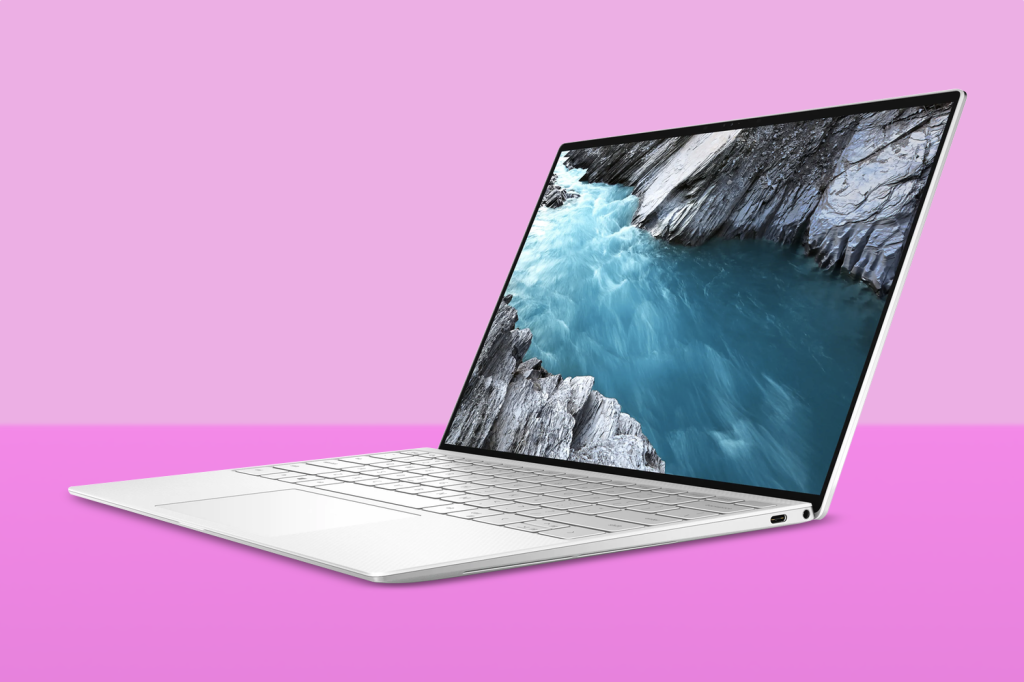
3. Dell XPS 13 (9310)
Stuff Verdict
Beautifully built and perfect for a backpack, Dell’s premium ultra-portable is superb in OLED spec – provided you don’t need lots of ports
Pros
- Stunningly sharp design
- Excellent screen and performance
Cons
- Speakers could be better
- Not ment port options
| Dell XPS 13 (9310) specs | |
|---|---|
| Screen | 13.4in OLED 3.5K (3456×2160) InfinityEdge Touch Anti-Reflective 400-Nit Display |
| Processor | 11th Generation Intel Core i7-1185G7 Processor |
| RAM | 16GB |
| Storage | 1TB SSD |
| OS | Windows 10 Home |
| Connectivity | Wi‑Fi; Bluetooth; 3.5 headphone; 2x Thunderbolt 4; microSD card reader |
| Dimensions | 29.6 x 19.9 x 1.48 cm, 1.27kg |
Dell’s XPS machines have long dominated the ultra-portable laptop market. But the latest edition steps things up another notch: besides a travel-friendly form factor and solid performance potential, the 9310 can also be configured with a stunning OLED display.
Streamlined by design, the XPS 13 is the epitome of what used to be called an Ultrabook; super slim at 1.48mm, relatively light at 1.27kg and blessed with slender bezels. The whole package feels well-built and reassuringly solid – and the premium impression continues with the satisfyingly responsive keyboard and trackpad. The only compromises? The 720p webcam could be sharper, while two Thunderbolt 4 ports feel a little miserly.
Opting for that OLED panel does reduce battery life, and you’ll get higher brightness from the LCD screens. But the OLED simply can’t be topped for colour coverage and depth: it’s a gorgeous thing to work with and watch on.
Performance depends on how you spec it, but 11th gen Intel silicon means the XPS 13 is no slouch in any setup. There’s more than enough power on tap to deal speedily with daily demands and creative workflows. Only if you task it with taxing games or 3D rendering is there any risk that the lack of discrete graphics hardware will hold you back.
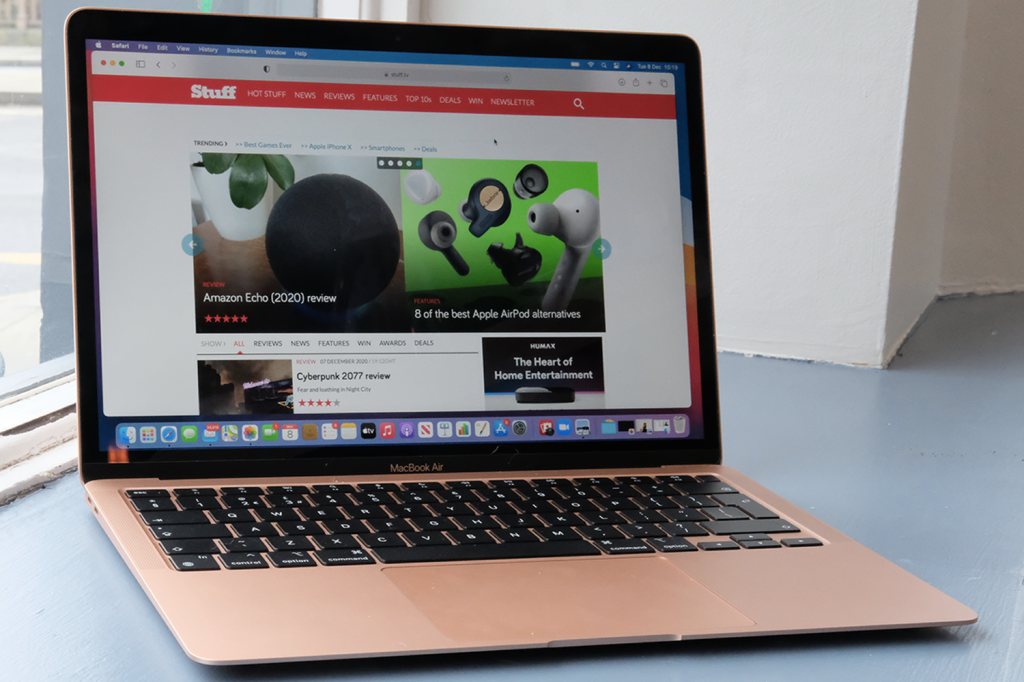
4. Apple MacBook Air (M1)
Stuff Verdict
Blazing speeds, beefy battery and a beautiful display: the M1-powered MacBook Air is still one of the best all-round laptops you can get for less than a grand
Pros
- Super-fast
- Great battery life
Cons
- Webcam poor
- Thick bezels
| Apple MacBook Air (M1) specs | |
|---|---|
| Screen | 13.3in LED-backlit display with IPS technology; 2560×1600 native resolution |
| Processor | Apple M1 chip |
| RAM | 8GB |
| Storage | 256GB SSD |
| OS | macOS Ventura |
| Connectivity | 802.11ax Wi‑Fi 6; Bluetooth 5.0; 3.5 headphone; 2x Thunderbolt 4 |
| Dimensions | 21.24 x 30.41 x 1.61cm; 1.29 kg |
Want a powerful, lightweight laptop with all-day battery life, brilliant build quality and a superb display? While it’s not the latest laptop to come out of Cupertino, Apple’s MacBook Air from 2020 remains a slender contender for the premium crown.
Since usurped by the M2 edition which now tops this list, the first Air to use Apple’s own silicon remains a masterpiece. Featuring the breakthrough M1 chip, it’s the computing equivalent of a speedboat. Fanless and fast, this MacBook Air is magnificent for multi-tasking. There is still a ceiling on its capabilities, but one that only power video editors are really at any risk of hitting.
Yes, the webcam could be sharper, the bezels slimmer and the port array more generous. But the rest of the MacBook Air M1’s feature set is otherwise just as impressive as its core performance. Battery life is heroic, the Magic Keyboard supremely responsive and the 13.3in Retina display is deliciously sharp and vibrant. Plus the whole lot is bundled up in a featherweight aluminium wedge that’s as slimline as ever.
- Read more: Apple MacBook Air M1 review

5. Microsoft Surface Laptop Studio
Stuff Verdict
Designed for designers, Microsoft’s magnesium machine isn’t the most powerful, but it is a beautifully executed lesson in hinged elegance
Pros
- Elegant hinge design
- Great build quality
Cons
- Does not include stylus
- Hinge is not optimised for the best drawing/stylus angle
| Microsoft Surface Laptop Studio specs | |
|---|---|
| Screen | 14.1in 2400 × 1600 3:2 ratio, up to 120Hz |
| CPU | Quad core i5-11300H or i7-11370H |
| RAM | Up to 32GB |
| GPU | Intel Iris Xe (i5) or Nvidia RTX 3050Ti/RTX A2000 (i7) |
| Storage | UP to 2TB SSD, removable |
| Cameras | Windows Hello, plus 1080p front-facing |
| Connectivity | Wi-Fi 6, Bluetooth 5.1, 2x USB 4, 3.5mm headphones, Surface Connect port |
| Dimensions | 323.28 mm x 228.32 mm x 18.94 mm, 1,820.2 g |
Disguised as a standard laptop, Microsoft’s Surface Laptop Studio is a refined hybrid for designers. A hinge behind the screen allows it to pivot forward into two positions: an angled stance that covers the keyboard or a flat, tablet-style setup. Unlike its Surface Studio sibling, though, it can’t be set to a low tilt for doodling.
A masterpiece in magnesium, Microsoft’s nailed the industrial design of the Surface Laptop Studio. It’s not the lightest at 1.8kg, nor is it the narrowest 14.4in notebook you can buy – but the build quality is easily on a par with Apple’s best efforts.
A 3:2 aspect ratio makes the display perfect for productivity and full-screen creativity. It can’t rival Apple’s mini-LED MacBooks, but it’s bright for an LCD and offers excellent colour depth. It also supports Microsoft’s Surface Slim Pen 2 stylus.
Performance could be better for the price. The base model is perfectly fine for digital design work, but video editors or 3D modellers would need to measure their expectations of Intel’s Xe graphics. So it’s not a powerhouse, but it is a beautiful thing to behold and use. And the 18-hour battery life means you can do that for a full day.
- Read more: Microsoft Surface Laptop Studio review

6. Apple MacBook Pro 16in (M2 Max)
Stuff Verdict
This maxed-out MacBook is big, expensive and overkill for all but the hungriest of power users. But it’s also a hugely impressive piece of computing kit
Pros
- Plenty of power
- Stunning display
Cons
- Overkill for most
- Large to carry around
| Apple MacBook Pro 16in (M2 Max) spec | |
|---|---|
| Screen | 16.2-inch Liquid Retina XDR 3456×2234 with P3, True Tone and ProMotion |
| Processor | Apple M2 Pro or M2 Max |
| RAM | 16GB/32GB configurable to 64GB/96GB if you have M2 Max |
| Storage | 512GB/1TB SSD configurable up to 8TB |
| OS | macOS Ventura |
| Connectivity | 802.11ax Wi‑Fi 6E; Bluetooth 5.3; 3.5mm headphone; 3x Thunderbolt 4; MagSafe 3; HDMI; SDXC |
| Dimensions | 35.6 x 24.8 x 1.7cm |
| Weight | 2.16kg |
In modern MacBook land, there are several tiers of Pro. The 16in model with M2 Max silicon? Very much at the top. It’s a world-beating workhorse with serious performance chops. And it will absolutely hoof your wallet.
Aping MacBook Pros of the past, there’s a boxiness to the shell that sets it apart from its predecessor. While the extra half-kilo yields longer battery life, the heft won’t suit everyone. But it’s not meant to.
Neither is the performance: for most people, the M1 Max is overkill. It takes specific workloads to utilise the immense multi-core power. Task it with video encoding, for example, and it can better a Mac Pro by processing seven streams of 8K ProRes footage simultaneously.
If portability is your priority, pick the MacBook Pro 14in (above). And if you want a powerful middle ground, spec the MacBook Pro 16in with an M2 Pro chip. But only desktop-grade grunt will do, this is the Pro to pick.
- Read more: Apple MacBook Pro 16in (M2 Max) review
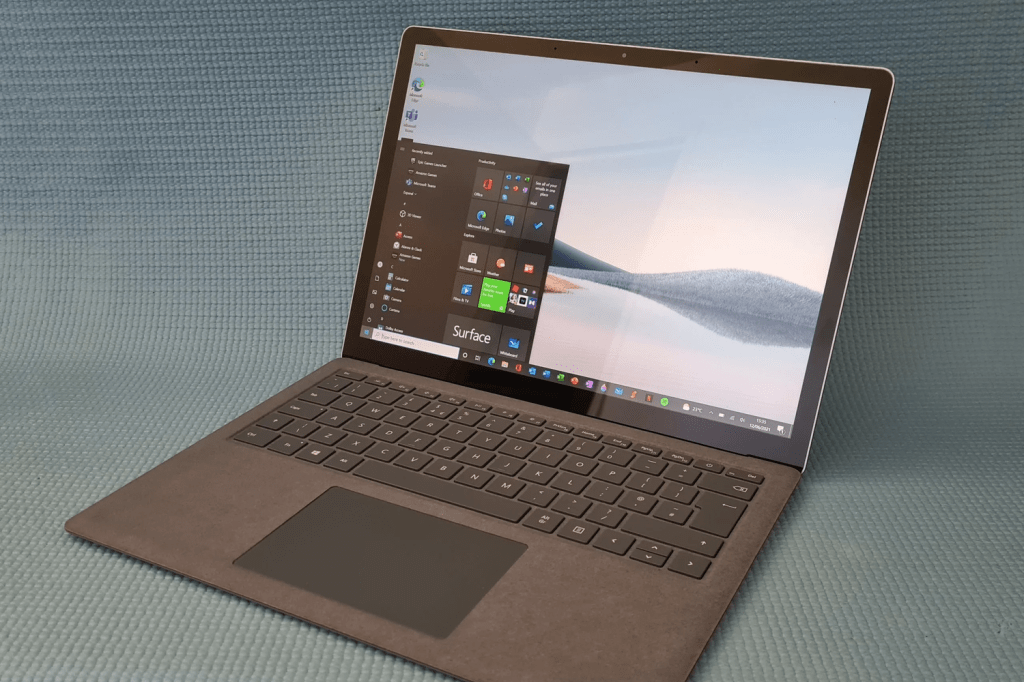
7. Microsoft Surface Laptop 5
Stuff Verdict
Updated silicon gives Microsoft’s ultraportable a performance and battery boost, in a package that can continue to trade blows with a MacBook Air
Pros
- Distinctive yet understated looks
- Day-long battery life
Cons
- Screen bezels still chunky
- Limited ports
| Microsoft Surface Laptop 5 specs | |
|---|---|
| Screen | 13.5in, 2256×1502 LCD touchscreen display w/ 3:2 aspect ratio |
| CPU | 11th-gen Intel Core i5-1135G7 quad-core, |
| Memory | 8GB RAM |
| Graphics | Intel Iris Xe integrated |
| Storage | 512GB SSD |
| Operating System | Windows 10 |
| Connectivity | 1x USB-C, 1x USB-A, 3.5mm headphone port, Surface Connect port |
| Battery | Up to 17hrs |
| Dimensions | 308x223x14.5mm, 1.26kg |
An update rather than an all-new model, the refreshed Surface Laptop is one of the best premium Windows Ultrabook laptops you can buy. Geared towards productivity, the 3:2 aspect ratio of its sharp 13.5in display is ideal for documents, while the keyboard and trackpad are satisfyingly responsive. Pick the option topped with Alcantara and your palms will thank you
Boosts to performance and battery life mean the Surface Laptop 5 can comfortably tackle heavier workloads, or last an entire workday away from the mains – with some juice left for a Netflix binge once you clock off. Something the punchy Atmos-optimised speakers can assist with.
Slimmer bezels would be nice, as would a slimmer price tag for the top-spec options. A paucity of ports also limits connectivity. But go for the mainstream variant and you’re still getting a lightweight, understated Windows notebook with MacBook build quality, day-long battery and versatile potential.
- Read more: Microsoft Surface Laptop 4 review
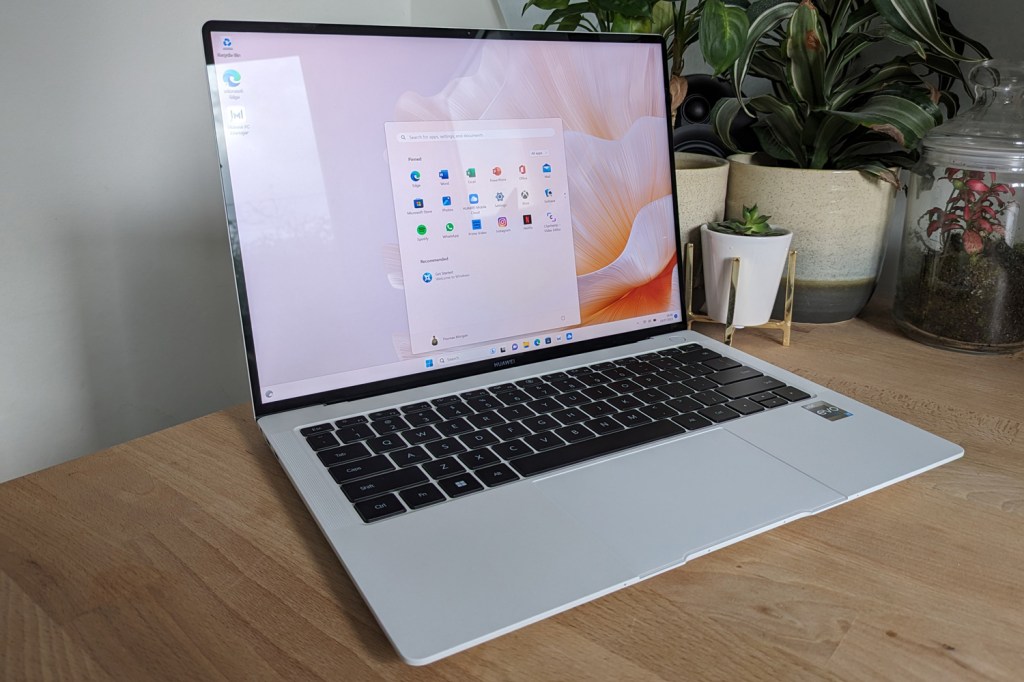
8. Huawei MateBook X Pro (2023)
Stuff Verdict
new CPU adds potency to an already slick ultraportable. Battery life could still be better, but the Matebook X Pro remains a tempting travel companion
Pros
- Latest CPUs deliver on performance
- Slick styling in a compact form factor
Cons
- No real battery life improvements
- Pricey, with no upgrade options
| Huawei MateBook X Pro (2022) specs | |
|---|---|
| Screen | 14.2in 3120×2080 LCD w/ 90Hz |
| CPU | Intel Core i7-1360p 12-core |
| Memory | 16GB RAM |
| Graphics | Intel Iris Xe |
| Storage | 1TB SSD |
| Connectivity | 2x Thunderbolt 4/USB-C, 2x USB-C, 3.5mm combi port |
| Operating system | Windows 11 |
| Battery | 60Wh |
| Dimensions | 310x221x15.5mm, 1.26kg |
With its upgrades being entirely under the hood, this year’s Matebook X Pro is a modest refresh over the previous generation. But that’s no bad thing, given it was already a very capable ultraportable. The keyboard and touchpad are as slick as ever, the 3:2 aspect ratio touchscreen is work-friendly as well as pixel-packed. HDR support and some decent stereo speakers are great for slacking off, too.
The 13th-gen Intel CPU only brings a minor performance boost, and dedicated GPUs remain off the table, so creatives and pros will still want to keep the Dell XPS 15 in mind. Battery life hasn’t really improved either, so the M2-powered MacBook Air remains the best choice for all-day working away from the mains.
We’re still fans of the Matebook’s styling, though, and can’t deny you’re getting a lot of machine for your money.
- Read more: Huawei MateBook X Pro (2023) review
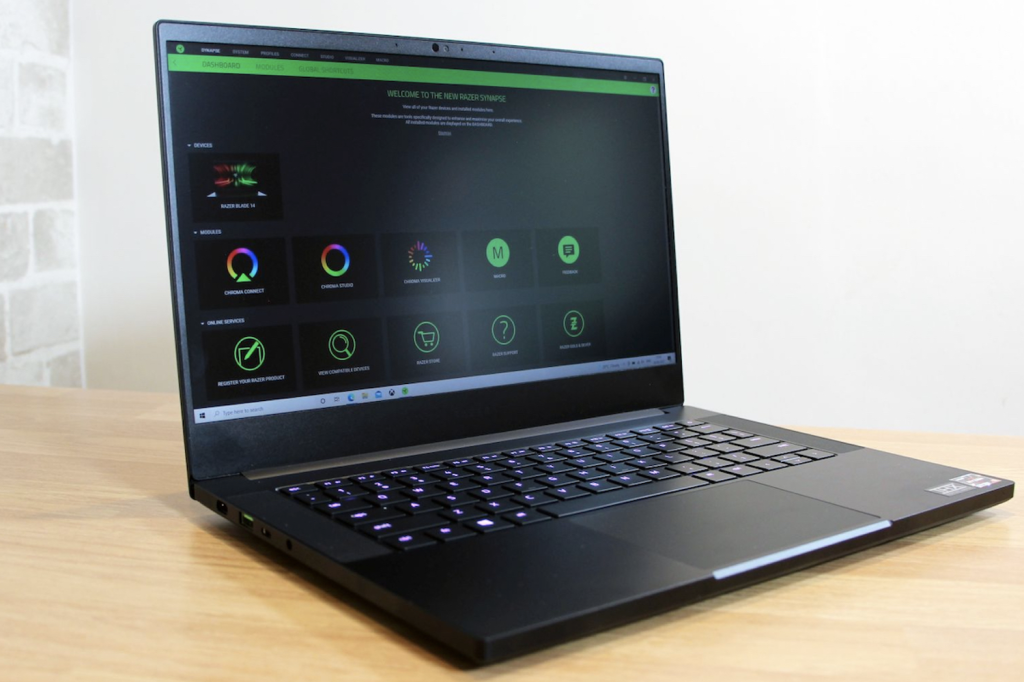
9. Razer Blade 14
Stuff Verdict
Razer’s first 14in laptop isn’t without compromise, but it’s also lightweight, robust and great for gaming on the go
Pros
- Sleek, slim and light design
- Crisp, fast keyboard
Cons
- Components are better elsewhere
- Some missing connectivity features
| Razer Blade 14 specs | |
|---|---|
| Screen | 14in 1920×1080 IPS |
| CPU | AMD Ryzen 9 5900HX octo-core, 3.3GHz |
| Memory | 16GB |
| GPU | Nvidia GeForce RTX 3060 6GB |
| Storage | 1TB |
| Operating System | Windows 10 Home |
| Battery life | Up to 10 hours |
| Connectivity | 802.11ax Wi-Fi 6, Bluetooth 5.2, 3.5mm headphone, 2x USB-C/DisplayPort/power delivery, 2x USB-A |
| Dimensions | 320x220x16.8mm |
| Weight | 1.78kg |
Razer’s first 14in laptop is also its first to ship with an AMD processor. And with Nvidia GeForce RTX 3060 graphics providing added gaming grunt, it strikes a superb balance between power and portability.
Like the rest of Razer’s notebooks, the Blade 14 comes clad in CNC-milled aluminium. And at 16.8mm slim and 1.78kg light, it cuts an understated picture next to your average beefcake gaming laptop. The 14in display ships with a Full HD resolution and 144Hz refresh rates as standard. You can opt for higher specs, but the default setup still delivers lashings of depth.
Yes, you’ll get more grunt from larger laptops with beefier cores. The underside can also run hot under load, while 90-minute gaming battery life is average, rather than impressive. But with powerful hardware crammed into a shell this streamlined, compromises are inevitable – and the sacrifices made by the Blade 14 are remarkably few.
- Read more: Razer Blade 14 review
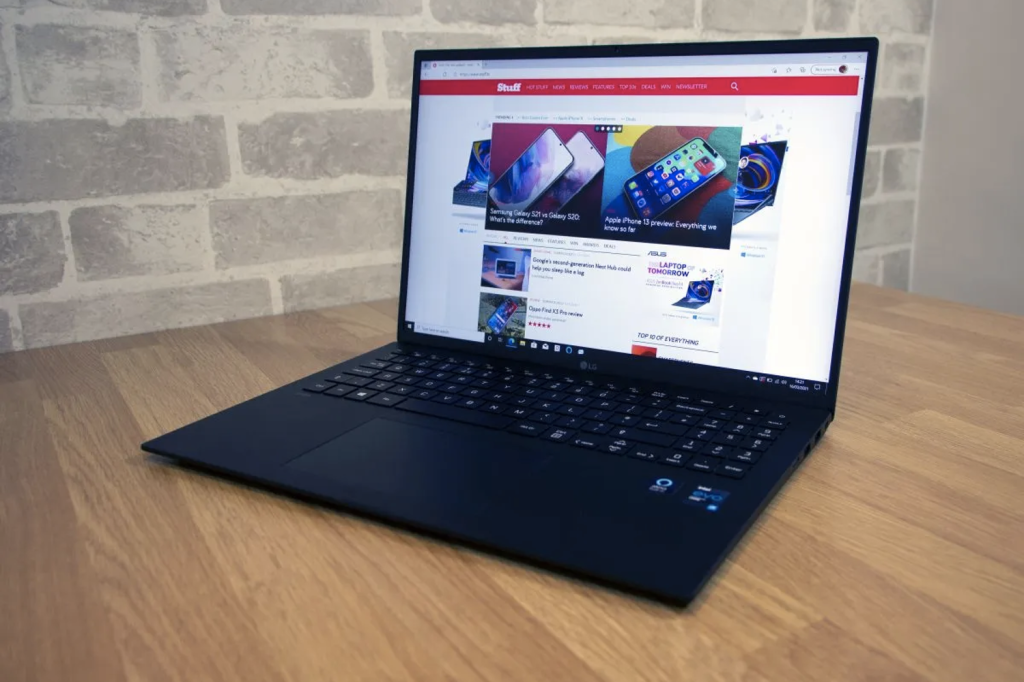
10. LG Gram 16
Stuff Verdict
A big-screen machine with mammoth battery life, the Gram 16 is a featherweight winner for everyday computing
Pros
- Incredible, lightweight design
- Big, bold 16:10 display
Cons
- More CPU power available elsewhere
- Exterior feels a little flimsy despite military testing
| LG Gram 16 specs | |
|---|---|
| Screen | 16in, 2560 x 1600 IPS |
| CPU | Intel Core i7-1165G7 quad-core, 2.8GHz |
| Memory | 16GB |
| GPU | Intel Iris Xe |
| Storage | 1TB |
| Operating System | Windows 10 Home |
| Battery life | Up to 21 hours |
| Connectivity | 802.11ax Wi-Fi 6, Bluetooth 5.0, 3.5mm headphone, 2 x Thunderbolt 4/USB-C, 2 x USB-A, 1 x microSD |
| Dimensions | 356 x 243 x 17mm, 1.19kg |
LG’s Gram laptops are all about streamlined designs, big screens and stellar battery life. The Gram 16 delivers in all departments: longevity is superb, the display immersive and the shell lightweight. In fact, at just 1.19kg, it’s the lightest 16in laptop in the world (at the time of writing).
Bolstering those already impressive credentials is a solid set of features. The keyboard is snappy to tap, the speakers reasonable enough and the 16:10 aspect ratio is ideal for streaming. Connectivity is similarly comprehensive and, despite the featherweight frame, the battery can surpass a massive 21 hours.
It’s not the top laptop when it comes to outright performance, though. Sure, it’s no slouch, but gaming and intensive image editing will be better handled by beefier, faster rivals. Then again, for a full day of mainstream tasks, the Gram 16 will still deliver without complaint. And it won’t be beaten on battery life.
- Read more: LG Gram 16 review
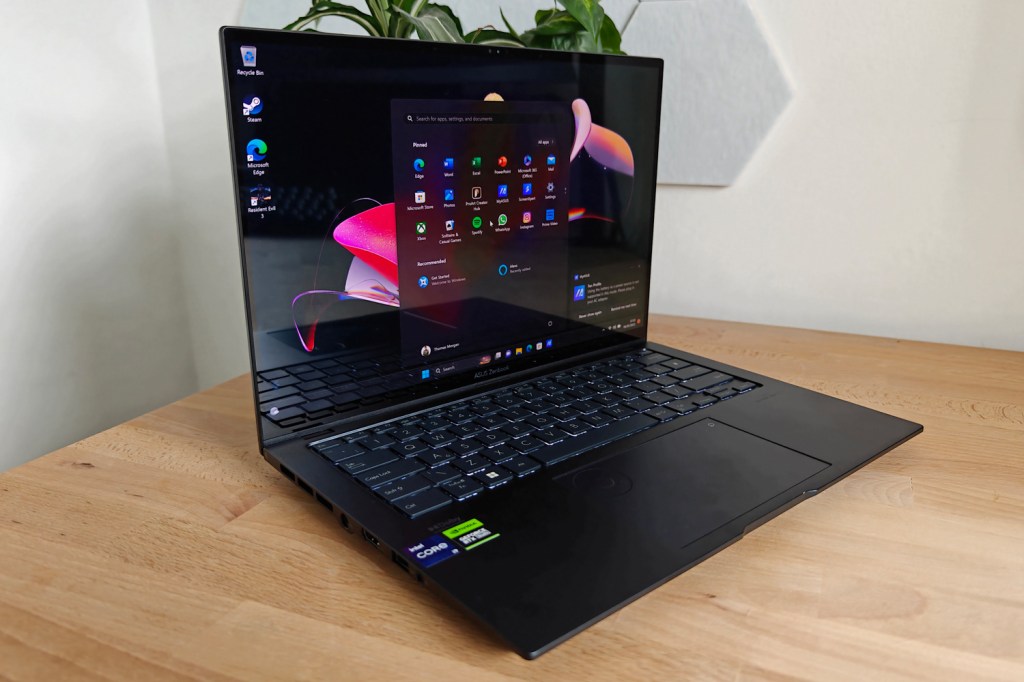
11. Asus Zenbook Pro 14 OLED
Stuff Verdict
A creator-focused portable powerhouse that can also manage some serious gaming – as long as you don’t mind lots of fan noise
Pros
- Superb performance for a 14in machine
- Gorgeous, high refresh rate OLED display
Cons
- Speakers not the clearest
- Demanding hardware gets hot and loud
| Asus Zenbook Pro 14 OLED specs | |
|---|---|
| Screen | 14.5in, 2880×1800 OLED w/ 120Hz, HDR |
| CPU | Intel Core i9-13900H |
| Memory | 32GB RAM |
| Storage | 2TB SSD |
| Graphics | Nvidia GeForce RTX 4070 |
| Operating system | Windows 11 |
| Connectivity | Thunderbolt 4, USB-C, USB 3.2 Type-A, SD card reader, HDMI, 3.5mm headphone port |
| Battery | 76Wh |
| Dimensions | 17.9mm, 1.6kg |
There’s no shortage of portable and powerful laptops doing the rounds, but the Zenbook Pro 14 OLED has to be one of the most well-rounded. It’s aimed primarily at creative types, who insist on Studio drivers for the Nvidia dedicated graphics card – these are confirmed to play nicely with industry-standard software, y’see – but there’s nothing stopping you from booting up a game once your work shift is over.
The 14.5in ultraportable weighs much less than 2kg, will easily slip into a backpack, and should last a solid seven or eight hours on battery power alone if you stick to sensible tasks, so you don’t have to stay tethered to a plug socket. When you do, though, the Zenbook Pro 14 OLED can unleash the full potential of its 13th-Gen Intel Core i9 processor and RTX 4070 GPU – demolishing desktop tasks and making short work of 3D renders.
To top it off there’s a stunning 14.5in OLED display, with skinny bezels, a sharp 2K resolution and rapid 120Hz refresh rates. Fully loaded it’s a seriously expensive laptop, but it also brings serious power.
- Read more: Asus Zenbook Pro 14 OLED review
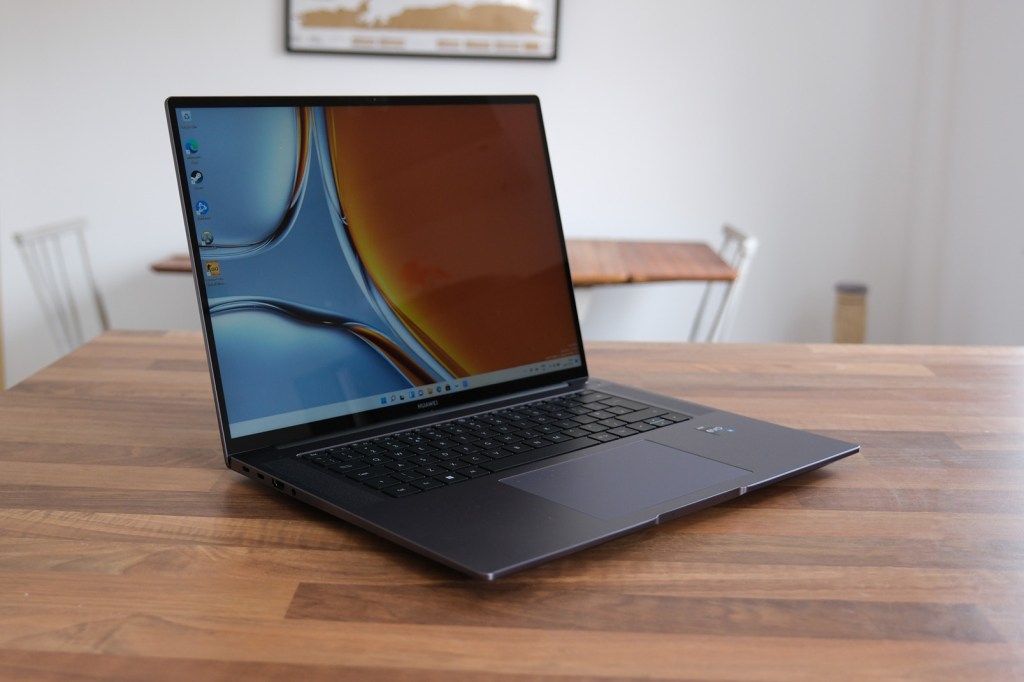
12. Huawei Matebook 16S
Stuff Verdict
Lightweight and well-built, a sizeable screen and stellar battery life put this premium machine on the shortlist for office workers who don’t need dedicated graphics
Pros
- Build quality and materials match the asking price
- Stellar battery life
Cons
- No dedicated GPU option
- No high refresh rate screen or HDR
| Huawei Matebook 16S specs | |
|---|---|
| Screen | 16in, 2520×1680 LCD touchscreen w/ 3:2 aspect ratio |
| CPU | Intel Core i7-12700H / Core i9-12900H |
| Memory | 16GB DDR5 |
| Storage | 1TB NVMe SSD |
| Graphics | Intel Iris Xe (integrated) |
| Operating system | Windows 11 |
| Battery | 84 Wh |
| Dimensions | 351x255x17.8mm, 1.99kg |
For a go-anywhere machine with a sizeable screen, the Matebook 16S gets plenty right. It’s well-built, benefits from a punchy display, and can be optioned with hardware to embarrass many desktops. It also represents excellent value when compared to the M1 MacBook.
Slim enough at 17.8mm, the Matebook 16S is also impressively wieldy for a 16in laptop. Its metallic matte finish is achieved with ceramic sandblasting, and the result is a device that feels suitably premium. Worker bees will appreciated the large display’s 3:2 aspect ratio and, while there’s no HDR support, its 100% sRGB coverage provides fantastic colour accuracy.
Opt for the Intel Core i9 processor and you’ll find its performance potential is rarely tested in the real world. With no option to spec a dedicated GPU, the i7 is the smarter chip choice for most: it’s more affordable yet still mighty quick, provided your tasks don’t require a potent graphics engine. Battery life is respectably tidy too, yielding up to six hours of productivity when you take the Matebook away from your desk.
- Read more: Huawei Matebook 16S review
What is a premium laptop?
Our selection spans slimline ultraportable and Ultrabooks, big-screen entertainment devices as well as MacBooks, covering both Windows and macOS. The main thing about a premium laptop is that it has the latest or recent generation hardware.
Often they’re ultraportable, but not always. Intel used to call ultraportable laptops Ultrabooks, but this has now been replaced by the Intel Evo specification which promises fast Wi-Fi chips and all-day battery life.
Also check out: Which tablet should you buy? Find out in Stuff’s guide to the best tablets


